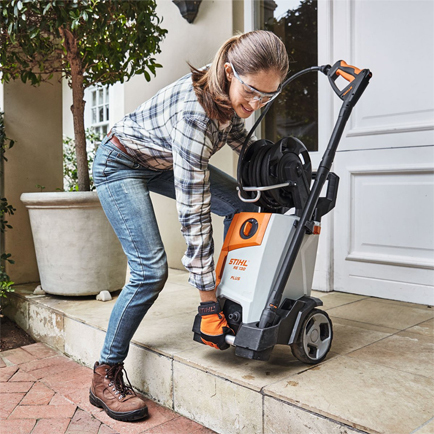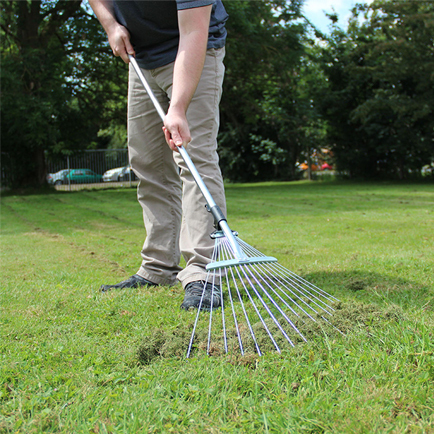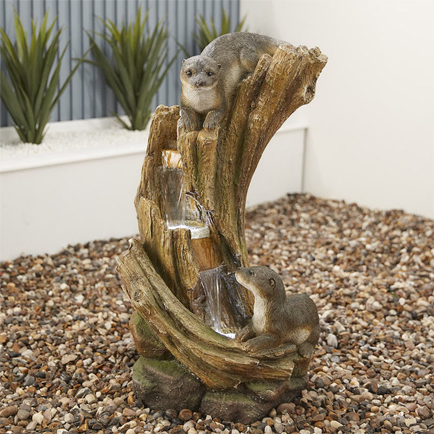From Overgrown to Outstanding: Prepping Your Garden for Spring
Posted by Rob Whitchurch on 19th Feb 2025
Transform Your Overgrown Garden into an Outstanding Spring Paradise: Essential Tips and Tricks for Preparation
With the days getting lighter and the first snowdrops starting to show, it's time to turn your attention to your somewhat neglected garden. Yes, over winter you may have let the grass grow a little longer, the piles of leaves are now the size of a small mountain, and it looks there's more weeds than actual plants. But don't despair, our handy guide is here to help you through the task of getting your garden ready for spring and beyond!
Its time to get the garden ready for summer! Discover essential tips to revive your outdoor space and make it bloom beautifully this season
The Big Garden Tidy
First things first, let's get your garden looking like it did before winter hit. Raking up dead leaves, removing fallen branches, and pulling weeds and plant debris can give you a blank canvas to start deciding what you want to plant and where. But we don't want anything to go to waste, so you can pop your leaves and plant debris straight into your compost pile to begin breaking down and provide your new plants with vital nutrients. It's important to clear all leaves off your lawn as they can carry bacteria that may cause damage, so a leaf blower can ensure none are left behind. Prune any wind damaged trees and branches and ensure to give your hedge a trim to bring it to a more manageable height.
If your outdoor patio is looking a little worse for wear, then hit it with a pressure washer to remove moss, dirt & grime, and get it back to looking like its just been freshly laid. A patio scraper is the best tool to get between the gaps to clear out any lingering weeds and get your patio back to looking its best. The same treatment can be given to your decking too. A quick brush to remove debris followed by a power wash, will get the wood back to its natural look.
Finish the deck with a resealler or a coat of stain to enhance its natural colour and help keep it protected and ready for summer! Inspecting fences, gates and trellis for damage and decay, especially from winter storms will help you catch any early warning signs that the wood might not last the season, while giving them the same treatment as your decking will help preserve them for the summer months. Clearing out your gutters of debris will allow a fresh flow of rainwater into your water butts, especially during April showers, ready for any droughts that may hit.
It's also time to bring out your Garden Furniture from Garden Storage or from under a Garden Furniture Cover and give it some TLC. A quick wipe will help revitalise it back to looking its best, ready for a summer of use, but if you thinks it's beyond saving, why not take a quick look through our Garden Furniture Range to spark some new ideas.
Turning your attention to your flower beds, if you've got clumps of snowdrops growing in one particular place, you can break them up and resite them to develop new colonies of growth around your garden. Speaking of resiting, now is a good time to move any plants that didn't grow as you expected into new locations to see if a change of position will help them develop over summer. Turning over your soil on your beds will add vital nutrients into the eco-system to help develop new and existing growth and also keep overwintering pests at bay. Removing any excess mulch will help prevent fungi and mould from developing, while pruning back climbers such as ivy & Virginia creeper that have outgrown their space is a must before birds begin nesting in them.
Looking over to the veg patch, if anything's still growing (sprouts, brassicas, leeks) now is the time to pick them, and it's best to pull the entire plant as any roots can be thrown directly onto the compost heap. Give the area a rake and add compost to prep your veg patch for a growing season. Cleaning your Greenhouse windows will allow as much light in as possible to ensure your new seedings and young plants have the best start to their growing life.
While you're in the middle of tidying it's best to carry out some basic garden tool maintenance to keep your secateurs and pruners sharp. Removing any rust on your garden hand tools will help prevent bacteria from being transferred to the plants, while giving them an oil and resharpening the blades will ensure clean cuts and lessen the chances of the plants dying back due to shock. Inspecting the lawn mower to ensure it's working correctly is a must, but always consult your owner's manual before you start.
Checking the spark plug, air filters and oil level will ensure your mower will be in perfect working order, while wiping the cutting deck with a damp cloth will help stop grass building up and clogging your machine. If you've got a petrol mower, you'll need to empty out the fuel tank and refill it as any fuel left in the tank over winter may have gone stale, limiting the performance of your mower. If, on the other hand you've opted for an electric mower, looking over the cable ensuring there's no nicks or cuts in the cable and ensuring the battery's fully charged, will ensure no nasty surprises, or flat batteries when you come to use it
Getting Ready To Plant
Now that your garden is looking more like a garden and less like a jungle, before planting, we've got to lay the groundwork to help every plant thrive.
Your lawn will become the focal point of your garden as temperatures rise, so it's best to give it some TLC before the summer parties begin. Aerating the ground and raking it helps remove dead grass and stops it becoming waterlogged. When its time for the first cut (usually around the first week of March), use your mower on its highest setting to take the tops of the grass off. You can also use this time to level out any uneven patches, apply lawn friendly moss killer and sow lawn seed if you've got a few bare patches to get that lush green look.
Testing your soils pH ensures what nutrients your beds and plots may be lacking and what material you may want to add to ensure proper draining and ensure you'll be planting the right plants in the correct areas. Turning over your compost pile, which has been hard at work all winter, will allow any newly added plant debris to begin to break down, while you can start adding your freshly rotted manure to your beds to help with water retention and keeping weeds under control.
Speaking of weeds, if you catch them early, you'll be able to stop them from sprouting into fully fledged nuisances, especially if you've laid down some weed control fabric to stop them from developing, while a plant friendly weed killer will keep them at bay without harming your gardens ecosystem.
Spring Sprouting
With the garden prepped and ready, it's time to decide what you're going to grow this season. Check old seed packets are worth keeping by popping a few seeds on a damp paper towel to see if they will germinate, saving you money in the long run and prevent unnecessary purchases. Pot up your seeds and seedlings into trays and keep them well watered and warm to give them the best start. Propagators are ideal for this as they can create a stable environment for your young seedlings to thrive before moving them on into small pots. Biodegradable pots allow you to pop the entire pot into the soil once the roots start poking through, as they simply break down, allowing nutrients to feed growth, and saving you the hassle of having to repot them and disturbing the roots.
Turning to the veg garden, plan out what you're going to grow this season, ensuring you crop rotate to get the best out of your gardens eco system and add vital nutrients to certain areas that may have been depleted during last years growing. First-early tubers, root veg, onions and hardy veg such as spinach are perfect for planting early to ensure early crops, strawberries can also be planted at this time of year but make sure to grow them under cloches or fleece to protect them from sudden cold snaps and pests.
As the warmer weather starts, early pollinators emerge from hibernation looking to begin gathering pollen and nectar, so ensuring plants such as Snowdrops, Clematis, Grape Hyacinth, Primrose & Crocuses are in key areas, will help these vital insects and allow your garden to become a haven for wildlife. If you've been helping non-migratory birds survive the winter months, topping up bird feeders and leaving fat balls out will ensure they keep coming back.
The Finishing Touch
With the bulk of the gardening now complete and ready for the season ahead, it's time to think about making your outdoor space stand out.
If your paths are looking as little well trodden then a new bag of stones will add some depth and colour to your space. If you're looking to create a relaxing haven where you can sit out and just enjoy your garden now that the hard works over, then there's nothing better than the relaxing sounds that come from a water feature, plus they're a great starting point to plant around and create a stunning focal point.
If you're going to be inviting friends and family over for a long summer party, string lights and solar powered stake lights will not only help them find their way through your garden, but will allow the party to go on all night, long after the sun has set.
And there you have it- our guide to getting your garden ready for the year ahead. At first, tackling your overgrown garden may seem like a daunting task, but little by little, your outdoor space will begin to take shape and become a haven for wildlife and a relaxing escape for you. So grab your gloves, dig in, and make your garden the envy of the neighbourhood. And if you've got any tips, tricks, or before-and-after pics, share them with us—we’d love to see what you’re growing! Happy gardening!










